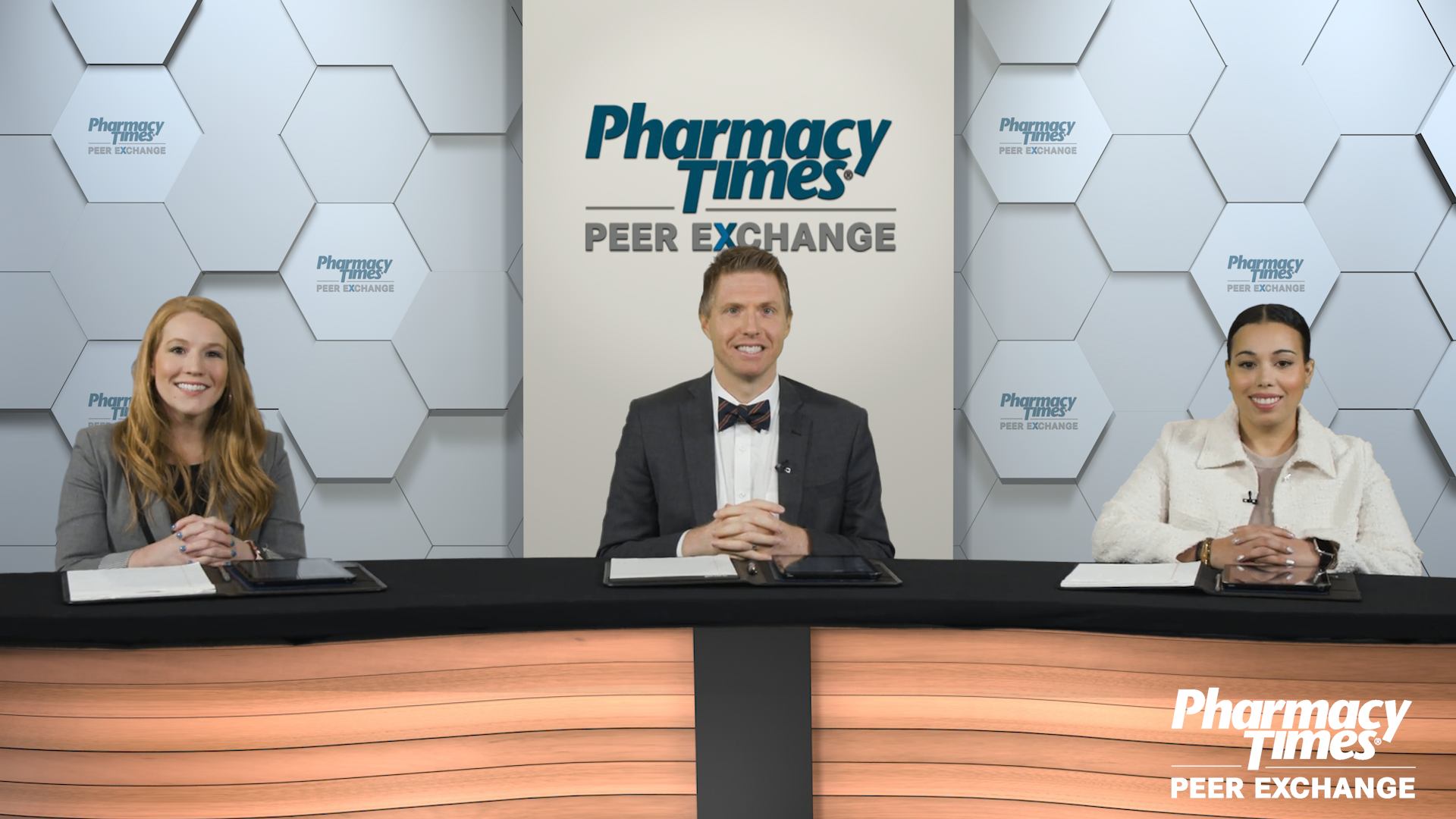
Role of the Pharmacist in Managing Side Effects Associated With CDK4/6 Therapy

Heather Moore, CPP, PharmD, BCOP, highlights the impact of pharmacists in adverse effect profile management for CDK4/6 inhibitors.
Ryan Haumschild, PharmD, MS, MBA: There are a lot of adverse effects in CDK4/6 [therapy] as well. As these become more of the mainstay, there are also key counseling points. Dr Moore, I want to talk to you because you’ve got a great practice here. I’m sure you utilize a lot of CDK4/6 [inhibitors] in your patient population. We know they can have negative impacts on patients. What is the pharmacist role and specifically your role in clinic when you’re monitoring and managing the adverse effects of CDK4/6 inhibitors?
Heather Moore, PharmD, CPP, BCOP : I want to go back to what you mentioned before: Setting up expectations with patients is essential. In terms of when we start therapy, a patient can know what to expect, how they’re going to manage it. It takes so much stress and anxiety away from therapy. So it’s always helpful when you’re educating patients to go through the things that are most likely to happen but then sometimes hit on those things that may likely not happen but how we would approach them if they did. And so in terms of CDK4/6 inhibitors, we have 3 of them. As Dr Kettle mentioned, we have palbociclib, ribociclib, and abemaciclib. And the role of the pharmacist and how we manage the adverse effects associated with them are different for each one. Palbociclib [is] tolerated well overall. But we have to be mindful of the myelosuppression [when] specifically thinking about the neutropenia that we see with palbociclib. What’s going to be important not just for palbociclib but [for] what we see with the other CDK4/6 inhibitors as well is that we’re doing appropriate laboratory monitoring. So with these agents, we are getting [laboratory tests] every 2 weeks for the first 2 cycles. We consider 1 cycle to be 28 days of therapy. After that, [laboratory tests] can be monthly. If patients are tolerating well, sometimes you can push them out to every 3 or 4 months, depending on how they’re tolerating [it] and [their] comfort in terms of when you’re following up with them. From a palbociclib standpoint, a lot of what we’re doing is managing any neutropenia but also knowing when we need to do dose modifications and thinking about fatigue that may be associated with it. Sometimes patients may have great counts, but if they’re not getting out of bed, if they’re not maintaining activities at home, then we still need to consider dropping to that lower dose. Ribociclib [is] very similar from a myelosuppression standpoint in what we see with palbociclib. But what we all know, the elephant in the room with ribociclib, is that we do have to be very mindful of QTc [QT interval corrected for heart rate] prolongation. And [the] most important component of that is knowing that when we’re managing and monitoring with ECG [electrocardiogram], it’s actually QTcF [corrected QT interval by Fridericia]; it is not QTc. And when you get an ECG [score], most of those are based on the Bazett formula when they’re calculated, not the Fridericia formula. So when you’re getting an ECG [score] in clinic, most of those you’re going to have to correct. A lot of providers aren’t familiar with this, especially in the community setting. And think about access to an ECG. You want to make sure that you’re correcting knowing when patients are due for their ECG [scans]. So [make] sure you always have one at baseline, midcycle, [and] end of cycle prior to starting that next cycle, [and be] aware of the cutoff. So knowing that the cutoff to start is a little different than what the cutoff is for when we’re continuing patients through therapy. And so that’s probably one of the most, if not the most, important thing we have to be mindful of with ribociclib. And with abemaciclib, it is more continuous dosing, [and] as we mentioned before, [it] has some of the myelosuppression that we mentioned already. But we also have to be mindful, as everyone knows, with diarrhea. So the thing with the diarrhea [from] abemaciclib is that for the most part it is tachyphylactic, meaning that patients will adjust over time. So there are 2 different methods. One is being mindful in terms of how we monitor and manage diarrhea. So I usually tell patients when [they] can expect it. It’s going to be a little later in the week after [they] start, [and I make] sure that patients know supportive care methods, thinking about low…but also the maximum doses when they may need to call in. We may need to think about using more prescriptive agents, things [such as] Lamictal, but sometimes what we’ve had a good benefit with is doing a dose escalation similar to other drugs [such as] neratinib. Or we may consider doing a dose escalation because we know that patients will adjust over time. So those are probably the biggest adverse effects, things that aren’t as common but [worth] being mindful of. We do see hepatotoxicity with both abemaciclib and ribociclib. So it’s not uncommon that you may see an elevation [in] LFT [liver function test] [results], and from there we need to know [whether] we need a whole therapy. Is this drug induced for patients who also have disease within the liver? [Or] is this progression? [We should be] mindful of how we may need to dose modify or make changes. So I would say those are the most common, and [that’s] how I bucket those.
Ryan Haumschild, PharmD, MS, MBA: It’s a great way to look at it, because even when you’re selecting therapy as a pharmacist, you want to be thinking, “[Does] this patient have something that might be more irritable bowel [syndrome] and diarrhea? I want to avoid that.” Or they might have underlying neutropenia. How do I be thoughtful of that? I like the overview and even the monitoring and the differences there, because the difference is in the details. That’s one of the great things about pharmacists is we really dig into those details to make sure that we’re monitoring the patients appropriately.
Heather Moore, PharmD, CPP, BCOP : [We’re]detail-oriented individuals.
Ryan Haumschild, PharmD, MS, MBA: That’s what I like about this discussion. And that’s what stands out to patients, too. And what makes a big difference in their lives [is that] one of the things we do is talk about adherence. And we know that getting the patient on the right therapy is only part of the journey. If a patient doesn’t have a good proportion of these covered or has limited toxicities that [are] causing them to abandon therapy or not have great adherence, it’s ultimately going to [affect] their outcomes. We want to do everything we can to intervene there and prevent that.
Transcript is AI generated and edited for clarity and readability.
Newsletter
Stay informed on drug updates, treatment guidelines, and pharmacy practice trends—subscribe to Pharmacy Times for weekly clinical insights.










































































































































































































